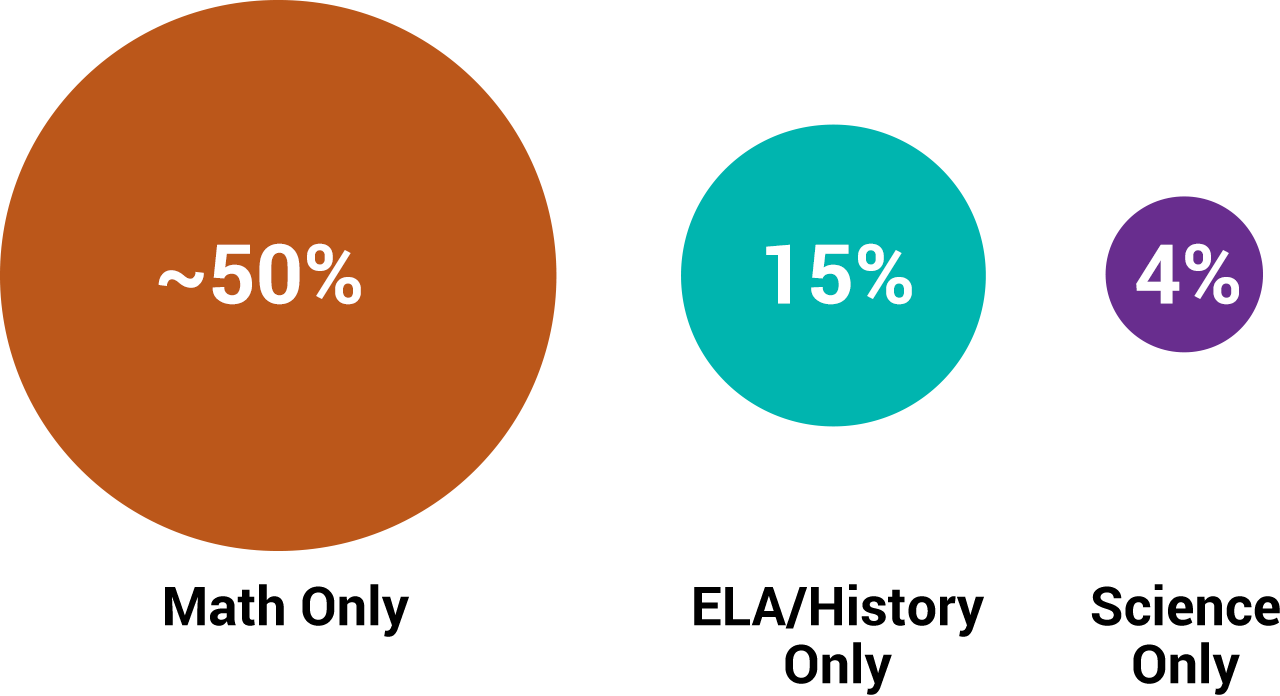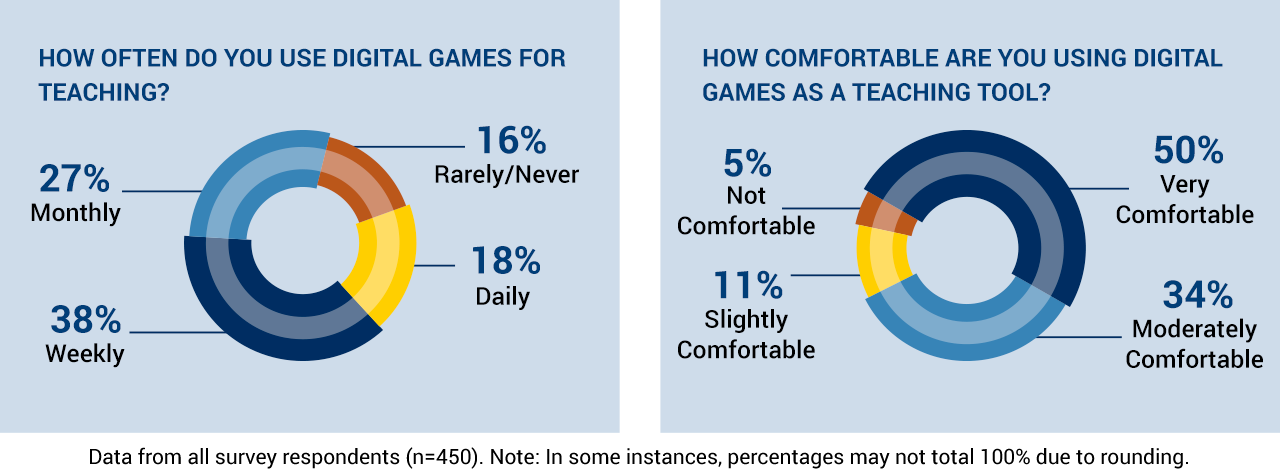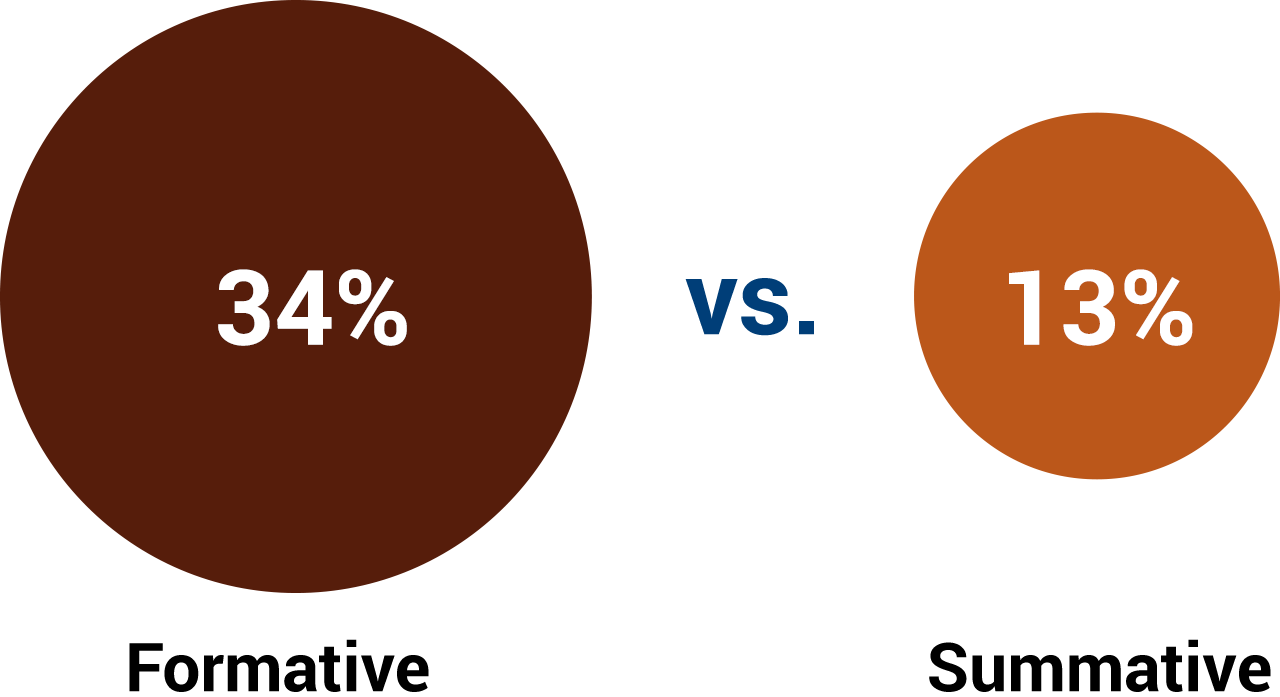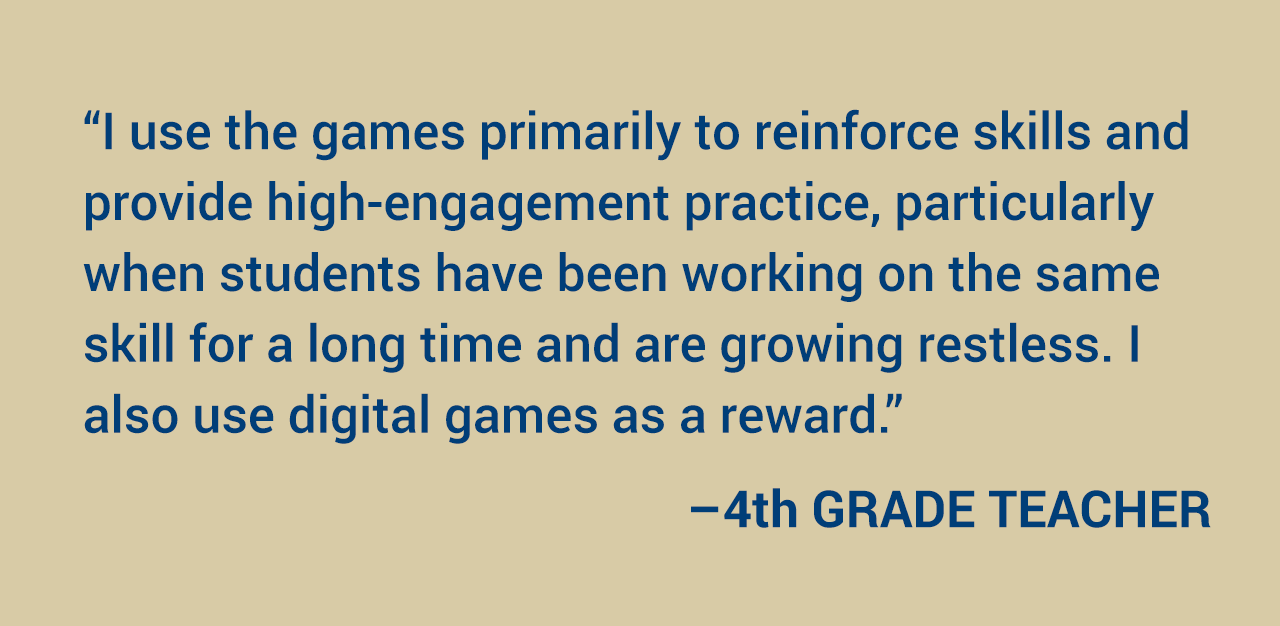
More than half of teachers use games weekly or more often in their teaching and the vast majority are at least moderately comfortable using games as a teaching tool.
Comfort with using games for teaching is strongly related to how often teachers use digital games in their teaching.

How do teachers use digital games?
The most frequent uses of games are to cover content mandated by state/national or local/district standards. In comparison, fewer teachers use games at least weekly to teach supplemental content.
While 34% of teachers use games at least weekly to conduct formative assessment, only 13% of teachers indicate a similar level of use for games as summative (end-of-unit or end-of-year) assessments.
Among teachers who use games at least monthly for teaching, the most frequent uses are to gauge student engagement with material, monitor student time-on-task, and to prepare students for mandated district/state tests.
Who uses games the most?
A higher percentage of elementary teachers use games weekly or more often for teaching and to cover content mandated by state/national standards, compared to secondary teachers.

42% of self-contained classroom teachers use digital games weekly or more often to carry out formative assessment, compared to 28% of subject-matter-only teachers. They also use built in assessments more frequently.
 A higher percentage of math-only (50%) subject matter teachers, compared to ELA/history-only (15%) and science-only (4%) teachers, use digital games weekly or more often to cover content mandated by state/ national standards.
A higher percentage of math-only (50%) subject matter teachers, compared to ELA/history-only (15%) and science-only (4%) teachers, use digital games weekly or more often to cover content mandated by state/ national standards.
How do teachers feel about games?
The majority of teachers believe games are effective for motivating students (90%), helping students reinforce or master previously taught content (89%), providing useful information about student learning (66%), and teaching students new content (59%).
What are barriers to using games?
The most frequently reported barriers — reported by more than 50% of teachers — are the cost of games, limited time in the curriculum, and lack of technology resources, such as computers and the Internet. Nearly half of teachers report they are unsure of where to find quality games and that it is hard to find games that fit their school’s curriculum. While 40% of teachers indicate that an emphasis on standardized test scores in their school is a barrier to using games.





